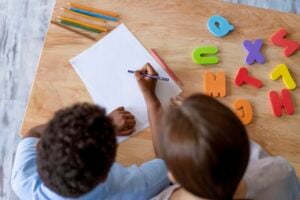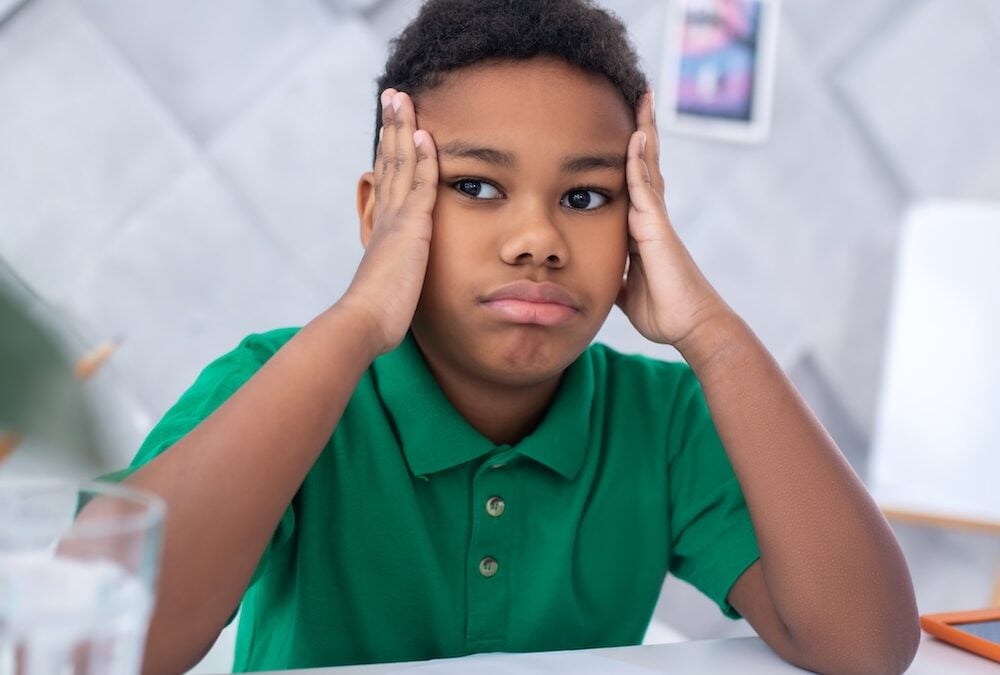In a world where perfection is often glorified, helping kids learn from mistakes can be a radical act of growth. But mistakes aren’t something to be feared—they’re powerful tools that support resilience, encourage self-awareness, and nurture confidence. By shifting the narrative from shame to learning, educators and parents can help children view their missteps as opportunities rather than failures.
In this article, we’ll explore the benefits of learning from mistakes, offer strategies to guide children through error-based learning, and link to powerful tools and Elementary SEL curriculum like Tools of the Heart and Planet Responsibility. All of which supports social emotional learning and builds stronger, more reflective students.
Why mistakes make you stronger
Children often associate mistakes with punishment or embarrassment. But when adults model a healthy response to errors, children begin to understand that mistakes help us grow. Learning to recover from a misstep builds grit, perseverance, and emotional regulation—all traits that are critical to a child’s long-term success.
When students are taught that learning from your mistakes is not just acceptable but essential, they are more likely to take intellectual risks, engage in new challenges, and persevere through setbacks. Some of the most impactful learning occurs in the moments after a mistake is made.
The brain science behind learning from mistakes
Neuroscience research confirms that mistakes and learning go hand in hand. When a child makes an error and reflects on it, new neural pathways form. This means the brain is literally growing and adapting.
By creating space for discussion around what went wrong—and what could be done differently—teachers and caregivers help children take ownership of their growth. This builds not only academic skills but also emotional maturity.
Teaching kids that mistakes are part of the process
Here are a few ways educators and caregivers can encourage children to embrace the learning process:
- Normalize mistakes: Share examples from your own life. Let students know it’s okay not to get it right the first time.
- Celebrate effort: Acknowledge hard work and progress instead of only focusing on correct answers.
- Reflect together: Ask reflective questions like, “What did you learn from that experience?” or “What would you do differently next time?”
- Use growth-minded language: Replace “I can’t” with “I can’t yet.” Help students build the belief that their abilities can improve over time.
- Incorporate SEL tools: Programs like Tools of the Heart offer activities that teach kids to pause, reflect, and respond thoughtfully when challenges arise.
Activities that support learning from past mistakes
Hands-on learning is one of the best ways to help kids internalize new concepts. Consider trying the following mistakes and learning activities in your classroom or home:
- “Try again” stations: Create a station with puzzles, math problems, or creative writing prompts that encourage multiple attempts.
- Story swap: Invite students to share stories about a time they made a mistake and what they learned from it.
- Growth wall: Dedicate a section of the classroom to notes that say, “I used to struggle with ___, but now I can ___.”
- Responsibility circles: Use Planet Responsibility to explore how actions affect others and how we can take accountability with kindness and intention.
Benefits of making mistakes in a classroom setting

Some benefits of this approach include:
- Increased confidence: Students who are not afraid to fail are more confident trying again.
- Stronger collaboration: Kids learn how to give and receive feedback respectfully.
- More creative problem-solving: When there’s no “perfect” answer, children learn to think outside the box.
- Deeper emotional intelligence: Understanding how to recover from mistakes supports empathy, resilience, and reflective thinking.
How do you learn from mistakes?
Learning from mistakes is a skill that can—and should—be taught. Adults play a crucial role in guiding children toward a mindset that sees errors as learning tools.
Here’s how to reinforce this:
- Model it: When you make a mistake, name it. Then talk through what you’re doing to make it right.
- Stay curious: Ask open-ended questions that help children dig into the “why” behind their choices.
- Practice forgiveness: Show children that making amends is a normal part of being human.
- Keep trying: Help students reflect on how mistakes led to new strategies, ideas, or understandings.
Mistakes aren’t a sign of weakness—they’re evidence that learning is taking place.
Making mistakes and learning from them builds resilience
Building resilience starts with helping students understand that making mistakes and learning from them is a lifelong process. Each stumble is a stepping stone toward growth. Whether it’s an academic error, a social misunderstanding, or a forgotten responsibility, students gain emotional strength when they are given the space to process and learn.
Pairing this process with SEL tools such as the Elementary SEL curriculum, which reinforces self-awareness and self-management, creates lasting change in how students navigate their world.
Teaching responsibility and reflection with SEL
Programs like Planet Responsibility and Tools of the Heart give students the vocabulary and structure they need to process mistakes thoughtfully. When embedded into classroom culture, these tools help students pause, reflect, repair, and move forward.
Additionally, Soul Shoppe’s social emotional learning programs encourage growth from the inside out, teaching students not just to process what they did wrong, but how they can make it right.
Turning mistakes into powerful teachers
We all make mistakes. What matters most is what we do next.
By shifting the focus from punishment to possibility, adults can help children grow into confident, capable, and compassionate learners. Whether it’s a misspelled word, a conflict with a friend, or a poor decision made in frustration, each mistake carries with it the chance to try again.
Let’s help students embrace their errors and see them for what they really are: some of the greatest teachers they’ll ever have.
You May Also Like:


